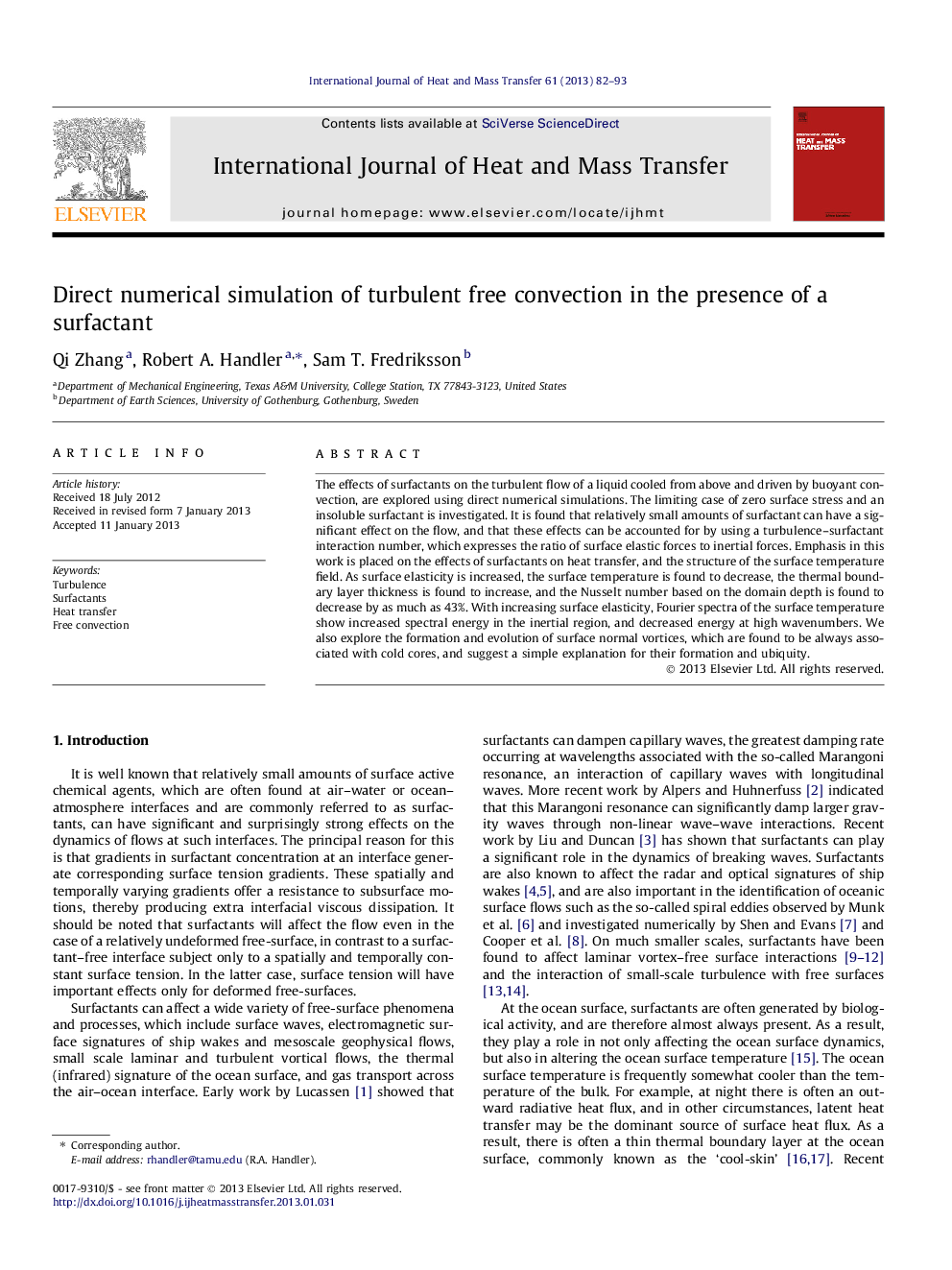| Article ID | Journal | Published Year | Pages | File Type |
|---|---|---|---|---|
| 7058900 | International Journal of Heat and Mass Transfer | 2013 | 12 Pages |
Abstract
The effects of surfactants on the turbulent flow of a liquid cooled from above and driven by buoyant convection, are explored using direct numerical simulations. The limiting case of zero surface stress and an insoluble surfactant is investigated. It is found that relatively small amounts of surfactant can have a significant effect on the flow, and that these effects can be accounted for by using a turbulence-surfactant interaction number, which expresses the ratio of surface elastic forces to inertial forces. Emphasis in this work is placed on the effects of surfactants on heat transfer, and the structure of the surface temperature field. As surface elasticity is increased, the surface temperature is found to decrease, the thermal boundary layer thickness is found to increase, and the Nusselt number based on the domain depth is found to decrease by as much as 43%. With increasing surface elasticity, Fourier spectra of the surface temperature show increased spectral energy in the inertial region, and decreased energy at high wavenumbers. We also explore the formation and evolution of surface normal vortices, which are found to be always associated with cold cores, and suggest a simple explanation for their formation and ubiquity.
Related Topics
Physical Sciences and Engineering
Chemical Engineering
Fluid Flow and Transfer Processes
Authors
Qi Zhang, Robert A. Handler, Sam T. Fredriksson,
